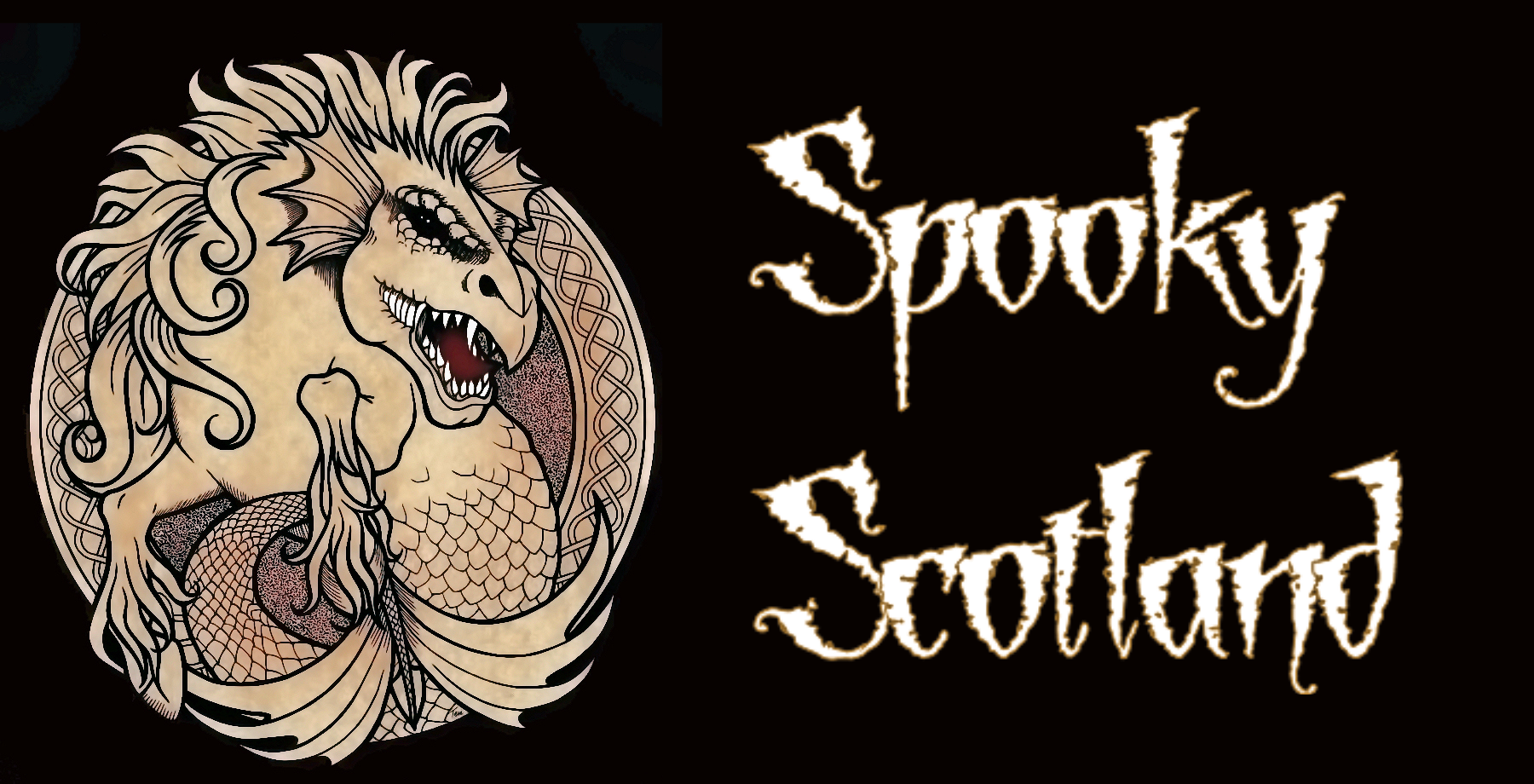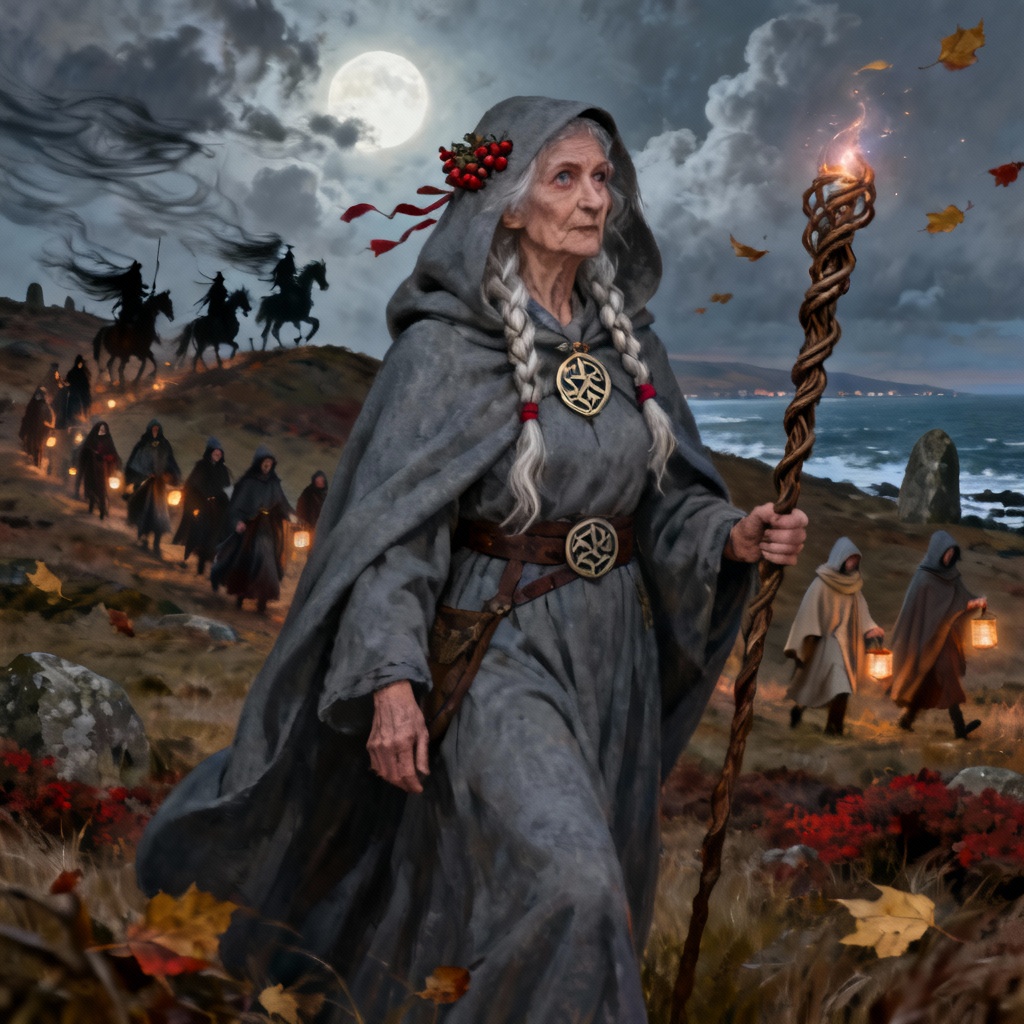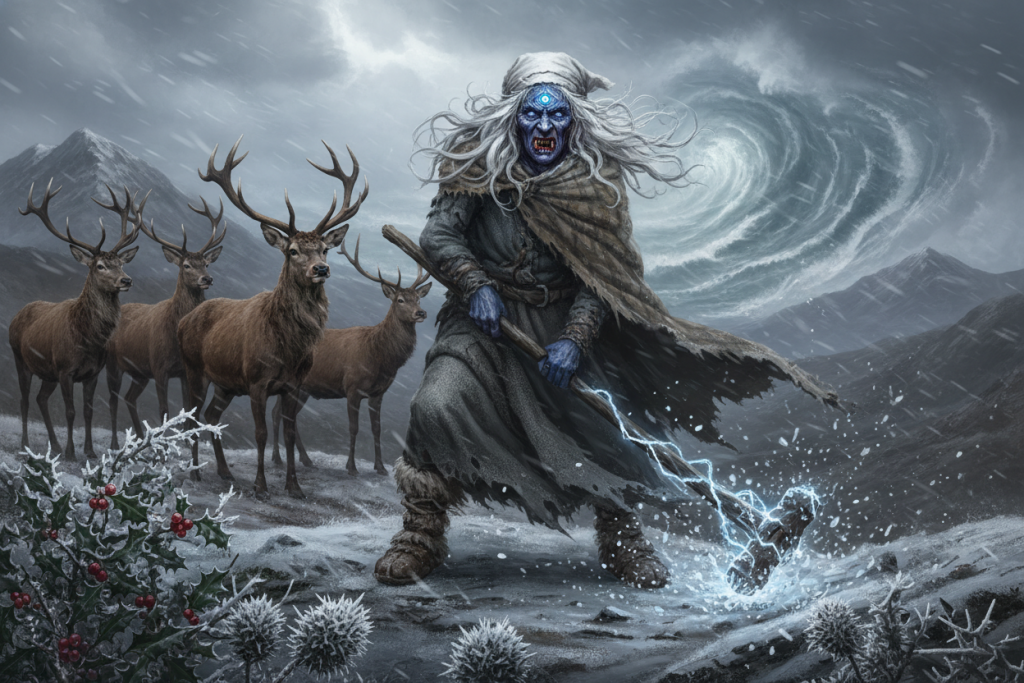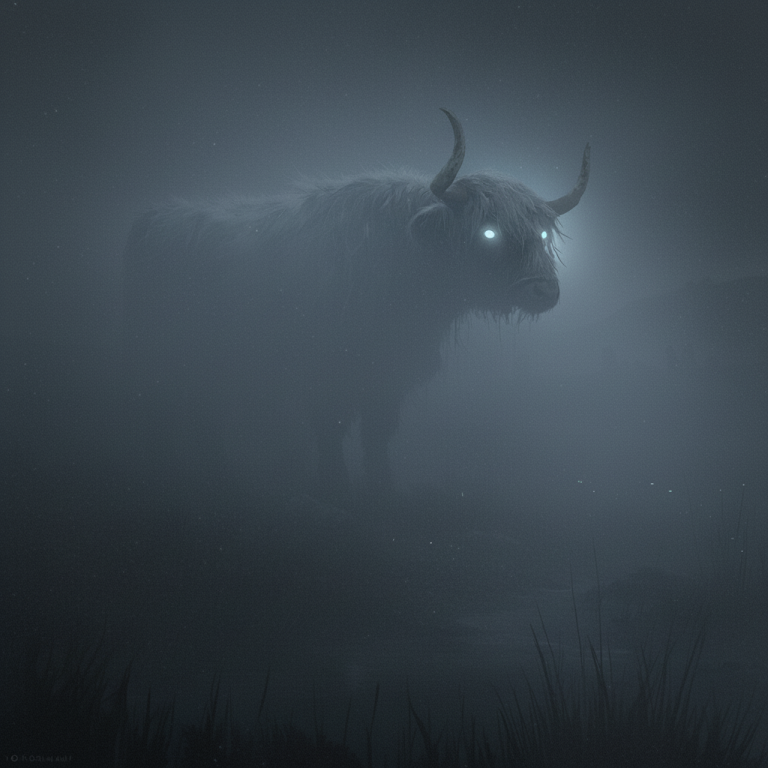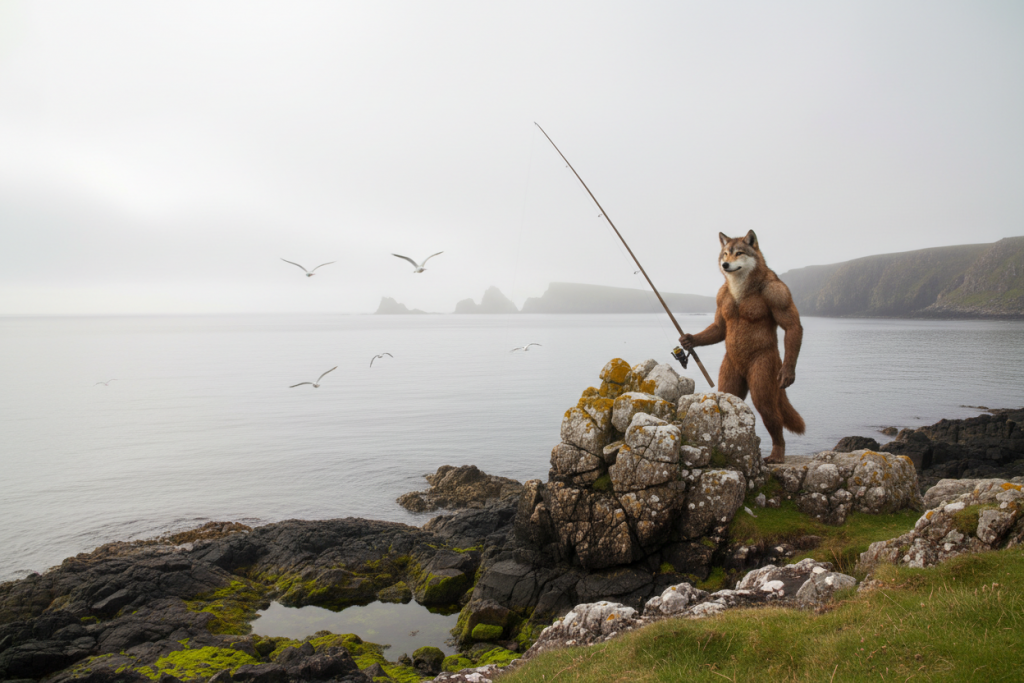General Information
Nicnevin is a figure from Scottish folklore. She has been described as a witch, a queen of the faeries, a goddess of Samhain, and sometimes referred to as the Scottish Hecate.
The origins of her name are debated. In Scottish Gaelic, it may come from Neachneohain, meaning “daughter of the divine” or “daughter of Scathach,” or NicNaoimhein, meaning “daughter of the little saint.” Other theories link it to the Irish goddess Neamhain, one of the Morrigan sister. Alternatively, it could be linked to water-spirits such as the Nixie or Nokke. It has also been interpreted as “Nic Neven,” or daughter of Neven/Neville, hinting at possible connections to historical families or witch-trial records.
Her identity is complex and has changed over time. She may be a demonised memory of an actual historical woman tried for witchcraft, a local nickname for several witches, or a mythological figure later conflated with others such as the Cailleach or Hecate.
Appearance
Nicnevin is usually described as an old woman or witch-like figure, sometimes called a “carlin” (the Scots word for an old woman or hag). She was said to wear a long grey mantle and carry a wand with power to transform the landscape. Her wand has been likened to the rod of Moses, which could turn water into rock and part the land. In other tales, she appears as a queenly or divine figure, surrounded by witches, fairies or spirits on Samhuinn night.
Habitat
Nicnevin is primarily linked to the Scottish Lowlands, especially Fife, and also to the Highlands, where stories connect her to Samhain and the powers of winter. She is also associated with Monzie in Perthshire, where a woman remembered as Kate McNeven was executed for witchcraft and later linked to the legend.
Behaviour
Nicnevin is portrayed in different ways depending on the story. She can appear as a commanding “witch mother” leading hosts of spirits and witches across the land, particularly during Halloween or Samhain. She is often linked to unholy rites and feared as a bringer of curses. However, in other traditions, she is more of a fairy queen, tied to magic, prophecy, or spinning and weaving.
Shape-shifting Ability
While there are no clear accounts of Nicnevin herself shape-shifting, she is closely tied to transformations in the land. With her wand, she was said to be able to alter water into solid ground and rocks into waves. This echoes the powers of land-shaping deities like the Cailleach.
Variant
Related figures include the Gyre-Carling (a hag or ogress figure connected with witches and households), the Cailleach (a divine old woman of winter), and Hecate (a Greek goddess of witchcraft). Over time, Nicnevin has also been linked to Herodias, Diana, and the Morrigan, showing how folklore traditions merged and reinterpreted her role.
Location in Scotland
Sightings and traditions cluster in Fife, Monzie in Perthshire, and St Andrews, where records note a woman condemned for witchcraft under the name Nicneven in 1569. Other legends place her more broadly across the Lowlands and Highland borders, wherever the traditions of the “Fairy Rade” and Samhain celebrations persisted.
Stories, Sightings or Experiences
The Flyting of Montgomerie (c.1580)
Nicnevin first appears in a literary source known as The Flyting of Montgomerie. This is a satirical poem in which the poet Alexander Montgomerie insults his rival, Patrick Hume of Polwarth. Nicnevin and her nymphs perform a ritual, thus dedicating Hume to Pluto and Hecate. The passage describes her as leading witches with charms gathered from across Scotland. This is the earliest known reference to Nicnevin and provides the foundation for later traditions.
The Witch-Burnings of St Andrews and Monzie
Historical records show that in 1569 a woman called Marion Nicneven (or NicNevin/Nic Neville) was executed at St Andrews for witchcraft. Some claimed she was over 100 years old and had been accused by jealous apothecaries because her medicines surpassed theirs. This woman may be the origin of the Nicnevin legends. In Monzie, Perthshire, oral history tells of Kate McNeven, who cursed the estate of Monzie as she was executed. However, she protected the Laird of Inchbrakie by gifting him a magic blue stone, said to preserve his family line. These accounts tied together fuelled her reputation as a witch of great power.
The Gyre-Carling Traditions
Nicnevin is often linked to the Gyre-Carling, another old woman figure in Scottish folklore. In Fife she was associated with spinning and knitting. Tradition said that anyone leaving work unfinished at the New Year would risk the Gyre-Carling stealing it. In satirical writing, she was also portrayed as cannibalistic, devouring Christian flesh. In one story, she left Scotland to marry “Mahomyte” and become queen of a foreign people. These are grotesque exaggerations, but they cemented her status as both feared and mocked.
Queen of the Fairies and the Hallowmass Rades
Later sources, especially in the 18th and 19th centuries, portray Nicnevin as leading vast spirit hosts on Halloween- the “Hallowmass Rades.” These ghostly processions resemble the European “Wild Hunt” motif. Sir Walter Scott and Robert Cromek described her as a hag goddess who commanded spirits, witches, and the dead on stormy nights.
Purpose of the Myth or Legend
Nicnevin’s role in folklore seems to be a cautionary one, reflecting a fear of witches. However, she is also given reverence as a powerful female archetype. As “witch queen” she symbolised the dangerous, liminal time of Samhain. This was a time when the dead crossed into the world of the living. As a possible historical figure, her story reflects the persecution of female healers during the Scottish Witch Trials. Later, as she became mythologised, she served as a bogey figure to frighten children, a scapegoat for misfortune, and eventually a symbol of Scotland’s deep and tangled folklore of witches, fairies, and winter itself.
